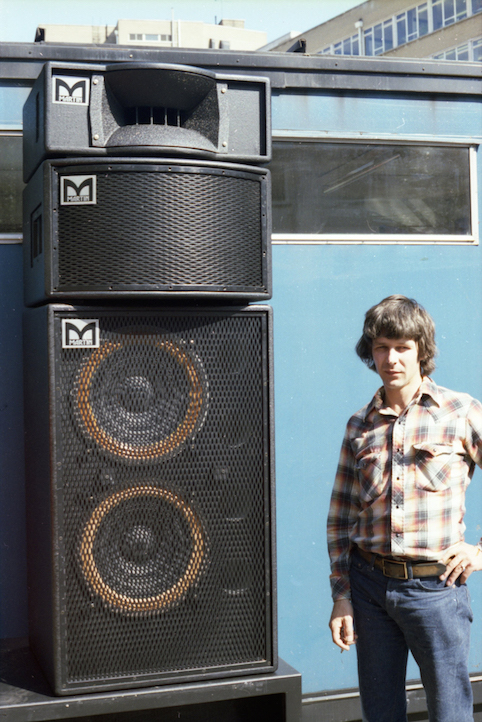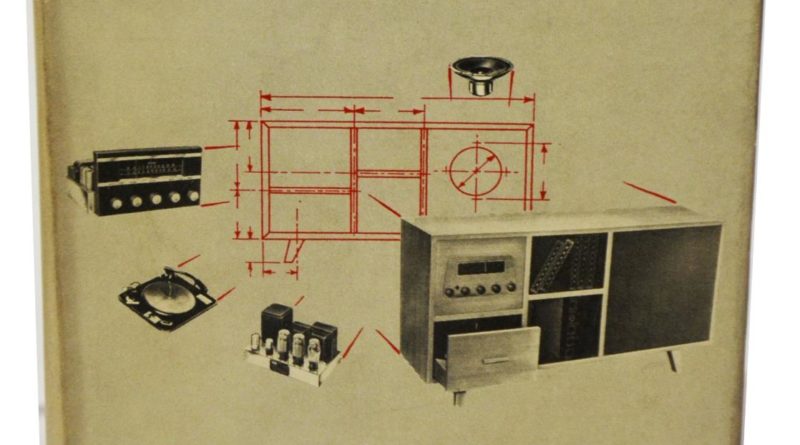1956 HiFI Manual Predictions Turn Out True
I am feeling venerable in the audio trade. There are still plenty of oldies far senior to me out there in HiFi, though. In the world of audio writing, I was always made to feel junior and it took twenty years before I was invited to join the trade association, which I declined. In fact most ‘proper’ hifi writers are getting long in the tooth – as well as dulled in the high frequencies’ hearing range by the auditory ageing process called presbycusis. So the new guard online are the winners. Some mighty websites are out there. I do like HiFi Pig, they seem to avoid the awful pretension found in so much posh audio writing.
Back in the Eighties, the massive public address equipment that used to be stacked on a stage and have midband enclosures called “Philishaves” as they looked so much like one, were made by Martin Audio and are now ‘vintage’ according to a company that has a full set of 1980’s kit and advertises on Facebook. I got my break as a ‘humper’ then as a ‘third man’ roadie simply because I was able to move great big heavy stuff with the professionals. Amplifiers for these systems used to be in big rack boxes on wheels with two lids, front and back, each on four massive butterfly clips. You undid them all, then lifted the wheeled box into one lid and put the other one on the top of the amp rack. They would sit in rows behind the stacks of P.A. in a nest of rubbery cables. And here is a weird side link to home audio. In 1984, to prepare for the Bob Dylan/Santana tour, they had to build big P.A. systems. The speaker boxes designed by Bob Kelsey (look him up and marvel) were skinnier than Martin Audio ones and the high frequencies came not from bullet drivers in the near range but from compression drivers fitted with the Transylvania Power Company ‘The Tube’ one inch throat slotted aluminium HF dispersal devices. These were driven by amplifiers made by QUAD. Yep, home amps that had their cases fitted with XLR sockets (that was my little task) so they could go in racks with two damn great big professional amplifiers for the mids and lows. Bonkers.

After the gig I would get to load the amp racks back into the deepest part of the trailer, called the dance floor in Rock N Roll trucking. It is where the weightiest things go, above the articulation of the truck. This meant working with the driver and lifting these mighty things up in heaps. I ended up with meaty shoulders.
Later I worked in pro audio and then with home kit before becoming a journalist about it all. And I found this book. A second edition, printed in 1956 after the 1954 first, in which it taught you about true HiFi. It is the HiFi Handbook (Revised Edition) By William J. Kendall, who was a radar specialist in World War 2.
It has a discussion about ‘Binaural Sound’. “Binaural broadcasting is also possible but to date only WQXR in New York has produced even a limited number of programs. In binaural broadcasting the sound picked up by one microphone is broadcast on AM. while the sound picked up by the second microphone is simultaneously broadcast on FM. These broadcasts may be enjoyed by people with both AM and FM radio is in the house.”
I wonder if there is anybody alive who recalls having heard or listen to this kind of stereo? It continues, “The ability of binaural to achieve more natural sound reproduction is unquestioned, but its future is still in doubt. Binaural radio with FM stations transmitting two sound signals on a single FM channel is possible but it is doubtful whether radio stations will ever install the new transmitting equipment required. The probable future for binaural sound reproduction lies with disk and tape recording. However, the duplication of equipment is expensive. Whether enough people consider the benefits worth the added expense is also questionable. Moreover, the repertory of binaural recording will obviously be limited until there is sufficient demand.”
I found this book and loved the sheer quaintness of the chapter about The Speaker. “in evaluating the performance of speakers we shall assume that the applied audio voltage represents undistorted sound containing a full range of values (i.e. complete coverage of the audible range from 20 to 16,000 c.p.s.).” Bless! How entertainingly singular! And what a narrow pass band! How I laughed. And c.p.s. or cycles per second, instead of Hertz!
And then came digital compression and MP3 and streaming and quality levels of audio depending upon if you have bought into the service rather than free service surfing with adverts. And while we are bang into the future that Scotty found so funny in the Star Trek movie when he spoke into the mouse, we have regressed back to most people using ‘A speaker’, even if like DiscovR from PURE, you have two tweeters in the thing.
What really brought this home, was the news item about the massive sphere from Elipson, the Planet W35 here: https://www.adamrayner.net/elipsons-new-planet-w35-the-future-of-audio-design/, that is £700! It is about HiFi and you would be expected to subscribe to Tidal or one of the HQ audio streaming services for super duper clear files. But you will be playing them back from a point source.
All of which is the detail and explanation behind why I am taking the PURE DiscovR to my mate the nursey mum to test for me properly. She who has kids and husband and a complex life. Her geezer uses Spotify premium, she uses Apple Music and their tiny tot just learned to say ‘Ah-lexa’, rather than just ‘Lexa’ as described in the story about how I was getting one to try. Mum also has an app on her phone that allows her to keep a weather eye on what her young ‘un is doing or saying on the speaker.
So the book was wrong as hell about everything, except that in the 21st Century 54 years odd later, we are back to using just ‘The Speaker’.
Drive safely now, and do avoid the old BOOMPH – TINKLE!
Adam Rayner On Line Editor

